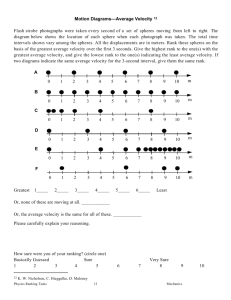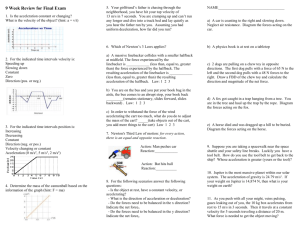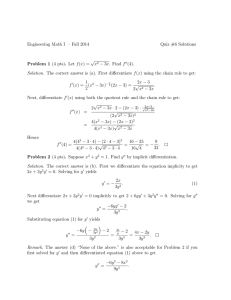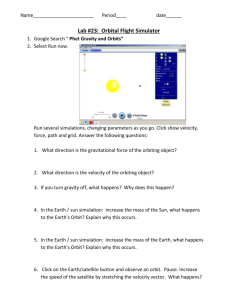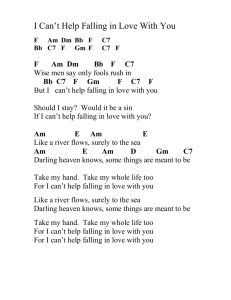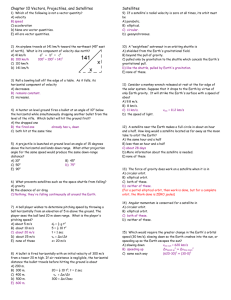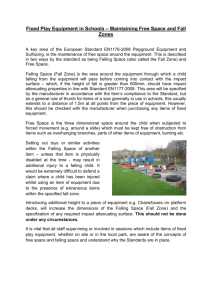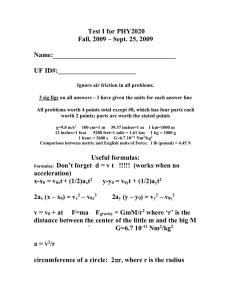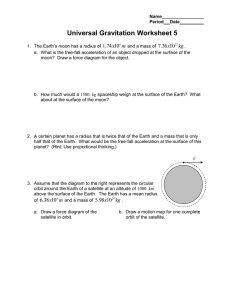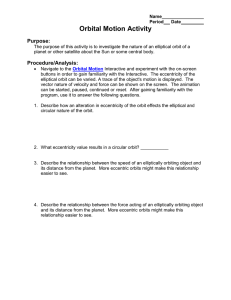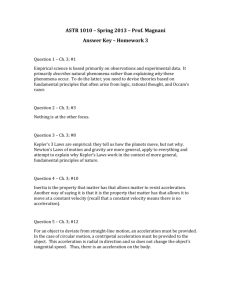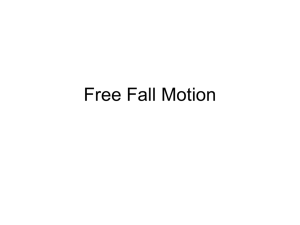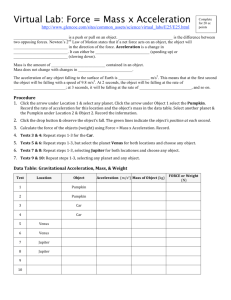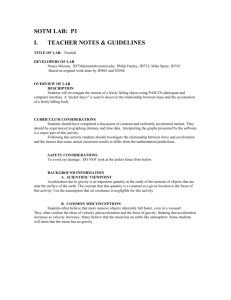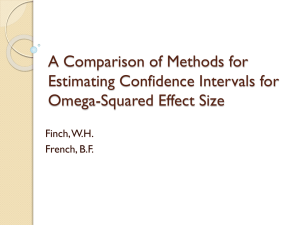Quiz 2014.09.22
advertisement
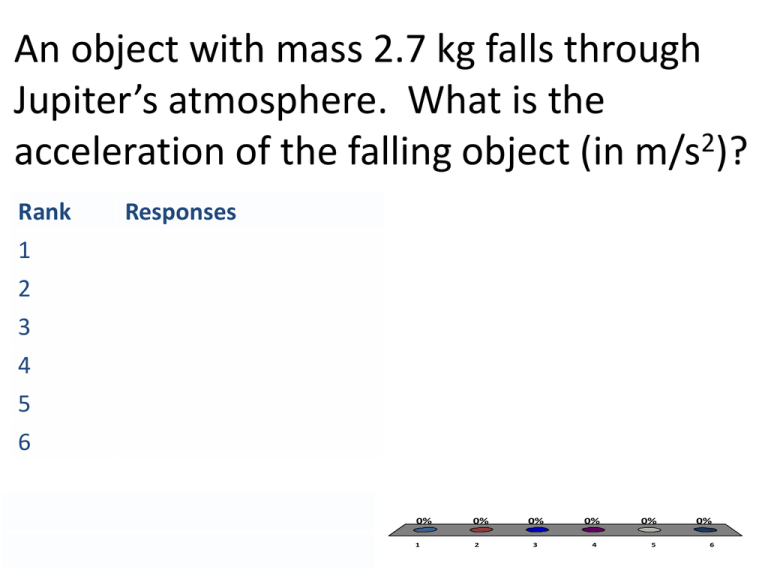
An object with mass 2.7 kg falls through Jupiter’s atmosphere. What is the acceleration of the falling object (in m/s2)? Rank 1 2 Responses 3 4 5 6 0% 0% 1 2 0% 3 0% 4 0% 5 0% 6 An object with mass 2.7 kg falls through Jupiter’s atmosphere. What is the weight of the falling object (in N)? Rank 1 2 Responses 3 4 5 6 0% 0% 1 2 0% 3 0% 4 0% 5 0% 6 In order to find the velocity needed to keep a satellite in a circular orbit around the earth, the mass of the satellite must be taken into account. A. True B. False se 0% Fa l Tr ue 0% The moon is constantly falling towards the earth. A. True B. False se 0% Fa l Tr ue 0% The formula 𝑣 = 𝐺𝑀 𝑅 relates velocity (v) to the mass (M) and radius (R) of an object. What happens if v > c? p. .. nd th is w s no t es e Th ob je c o N ob je c ts at te xi s is fie s do e ul a m fo r e Th 0% n. .. 0% or .. 0% t, a A. The formula does not work, since v > c cannot happen. B. No object satisfies this property! C. These object exist, and nothing can orbit this object at a distance < R. Like in the movies, we want artificial gravity on a space station. A cylindrical space station 275 in diameter spins about its central axis. How many revolutions per minute must it turn so that the objects inside and against the outer hull experience an acceleration equal to g? Rank 1 2 Responses 3 4 5 6 0% 1 0% 2 0% 3 0% 4 0% 5 0% 6

